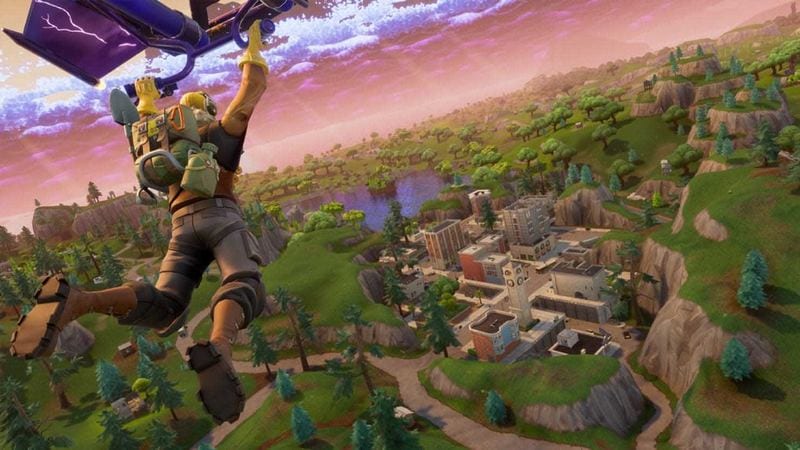- Home
- Games
- Games News
- Fortnite Playground Mode: Epic Games Explains What Went Wrong
Fortnite Playground Mode: Epic Games Explains What Went Wrong

Fortnite's Playground LTM or Playground mode as it's called lets you practice, strategise, and learn the nuances of the game. And while that's the intention, it's now more popularly known for the wacky creations made by its players such as giant N64 consoles and Mario Kart race tracks. However it was subject to an extremely rough launch. So much so that it was added and removed on the same day and impacted matchmaking in Battle Royale mode too. Fortnite creator Epic Games took to its website to outline the changes it made after removing Playground mode.
"Our matchmaking is built on something called the Matchmaking Service (MMS), which is responsible for facilitating the “handshake” between players looking to join a match and an available dedicated server open to host that match. Each node in the matchmaking cluster keeps a large list of open dedicated servers that it can work with, randomly distributed by region to keep a roughly proportional amount of free servers for each. Players that connect to MMS request a server for their region, MMS assigns that player to a node, and the node picks a free server for the requested region from its list," Epic's post reads.
Since Fortnite Playground mode makes matches for one to four people instead of 100, it needed between 25 and 100 times as many matches as normal depending on party size". And while Epic could throw more servers at the problem, it would result in other issues.
"While we could pack virtual servers a bit tighter per physical CPU for Playground mode, we still had to use 15 times as many servers as we had been running for the other modes. We were able to secure the total server capacity, but it meant the list that each node had to manage was suddenly 15 times as long as well," the post continues.
What this meant was an MMS node would ask other nodes for a free server by reading each of their local lists. With each list 15 times longer it slowed matchmaking down to a grinding halt. Epic didn't consider the initial rush of players trying to access the mode at launch.
"We planned and prepared for what we thought to be the maximum sustained matchmaking throughput and capacity based on the size of our player base (plus a healthy buffer), but didn’t properly anticipate the edge-case of the initial “land rush” of players exhausting local lists," the company said.
Furthermore, it seems that the company didn't have a proper estimate on available cloud resources in markets like Asia, which should come as no surprise given Fortnite's popularity is mainly in the US and Europe.
"On the restart of the mode itself, we had an additional learning experience. We opted to bring back Playground in small steps by individual regions and platforms, with the goal of reducing the initial load on the system so we could scale into it. We actually encouraged the opposite, as players swapped regions into those that had the mode re-enabled and forced us to slow the rollout as we dealt with capacity issues. The silver lining is that we certainly have much better visibility into the total available cloud resources in Asia than ever before, and we want to give a shoutout to our cloud partners for working with us to ensure we could quickly adjust."
At the moment, Epic has removed Fortnite Playground LTM in efforts of a fully-fledged creative mode.
If you're a fan of video games, check out Transition, Gadgets 360's gaming podcast. You can listen to it via Apple Podcasts or RSS, or just listen to this week's episode by hitting the play button below.
Catch the latest from the Consumer Electronics Show on Gadgets 360, at our CES 2026 hub.
Related Stories
- Samsung Galaxy Unpacked 2025
- ChatGPT
- Redmi Note 14 Pro+
- iPhone 16
- Apple Vision Pro
- Oneplus 12
- OnePlus Nord CE 3 Lite 5G
- iPhone 13
- Xiaomi 14 Pro
- Oppo Find N3
- Tecno Spark Go (2023)
- Realme V30
- Best Phones Under 25000
- Samsung Galaxy S24 Series
- Cryptocurrency
- iQoo 12
- Samsung Galaxy S24 Ultra
- Giottus
- Samsung Galaxy Z Flip 5
- Apple 'Scary Fast'
- Housefull 5
- GoPro Hero 12 Black Review
- Invincible Season 2
- JioGlass
- HD Ready TV
- Laptop Under 50000
- Smartwatch Under 10000
- Latest Mobile Phones
- Compare Phones
- Tecno Spark Go 3
- iQOO Z11 Turbo
- OPPO A6c
- Samsung Galaxy A07 5G
- Vivo Y500i
- OnePlus Turbo 6V
- OnePlus Turbo 6
- Itel Zeno 20 Max
- Lenovo Yoga Slim 7x (2025)
- Lenovo Yoga Slim 7a
- Lenovo Idea Tab Plus
- Realme Pad 3
- Garmin Quatix 8 Pro
- NoiseFit Pro 6R
- Haier H5E Series
- Acerpure Nitro Z Series 100-inch QLED TV
- Asus ROG Ally
- Nintendo Switch Lite
- Haier 1.6 Ton 5 Star Inverter Split AC (HSU19G-MZAID5BN-INV)
- Haier 1.6 Ton 5 Star Inverter Split AC (HSU19G-MZAIM5BN-INV)
















